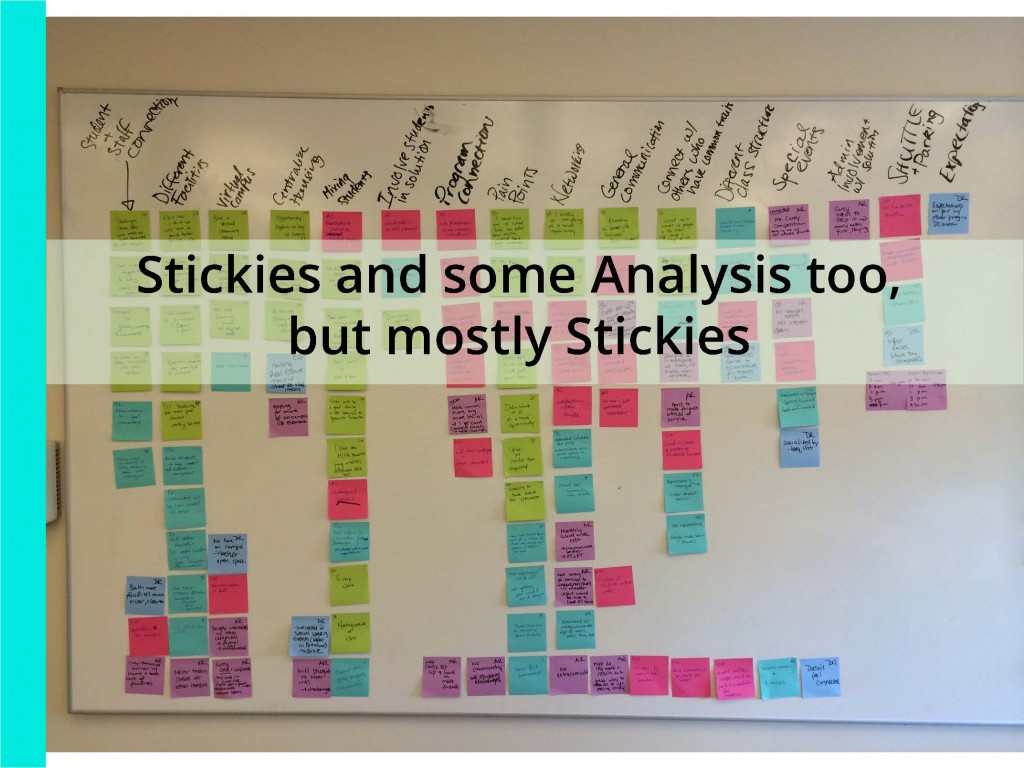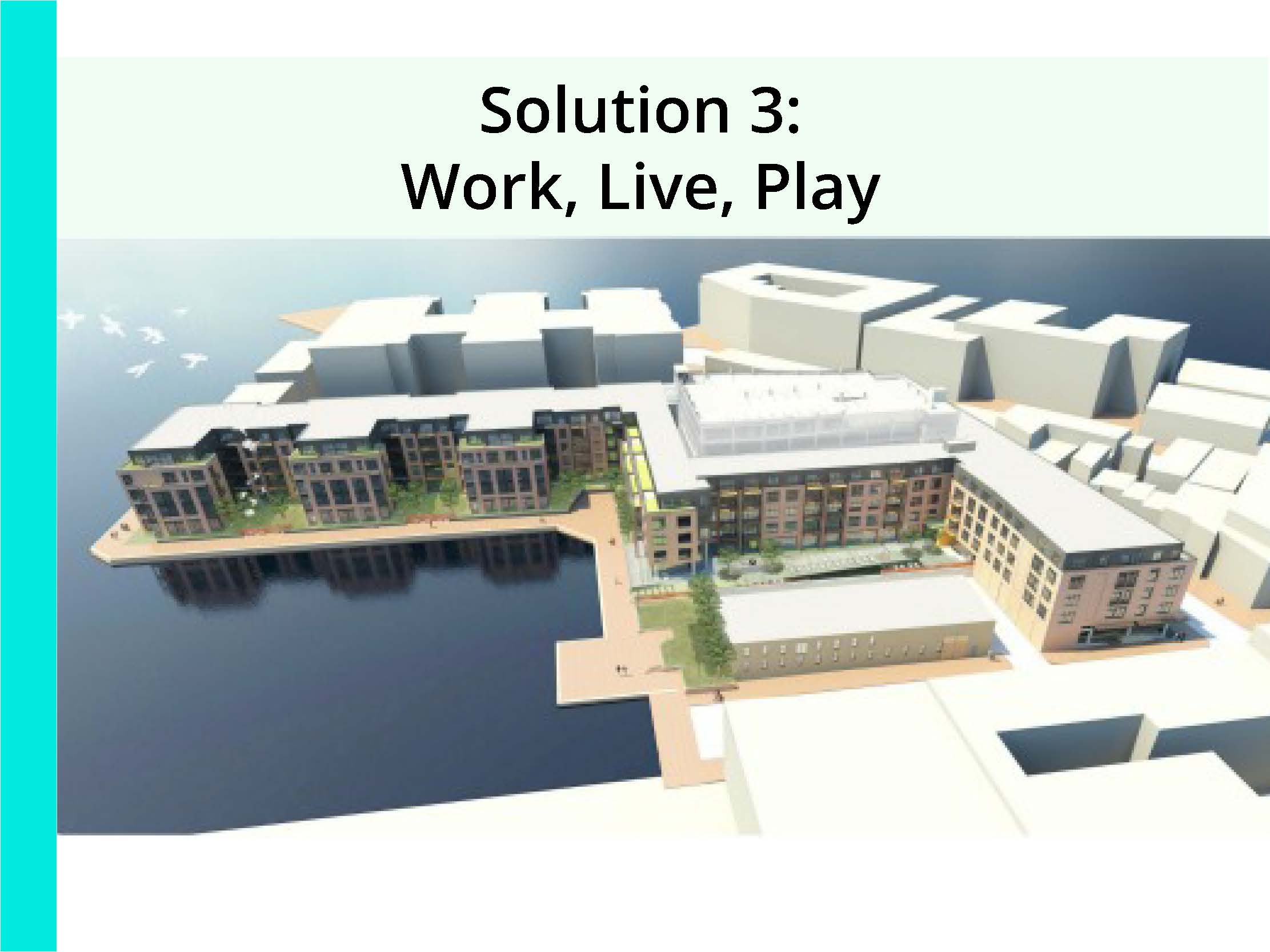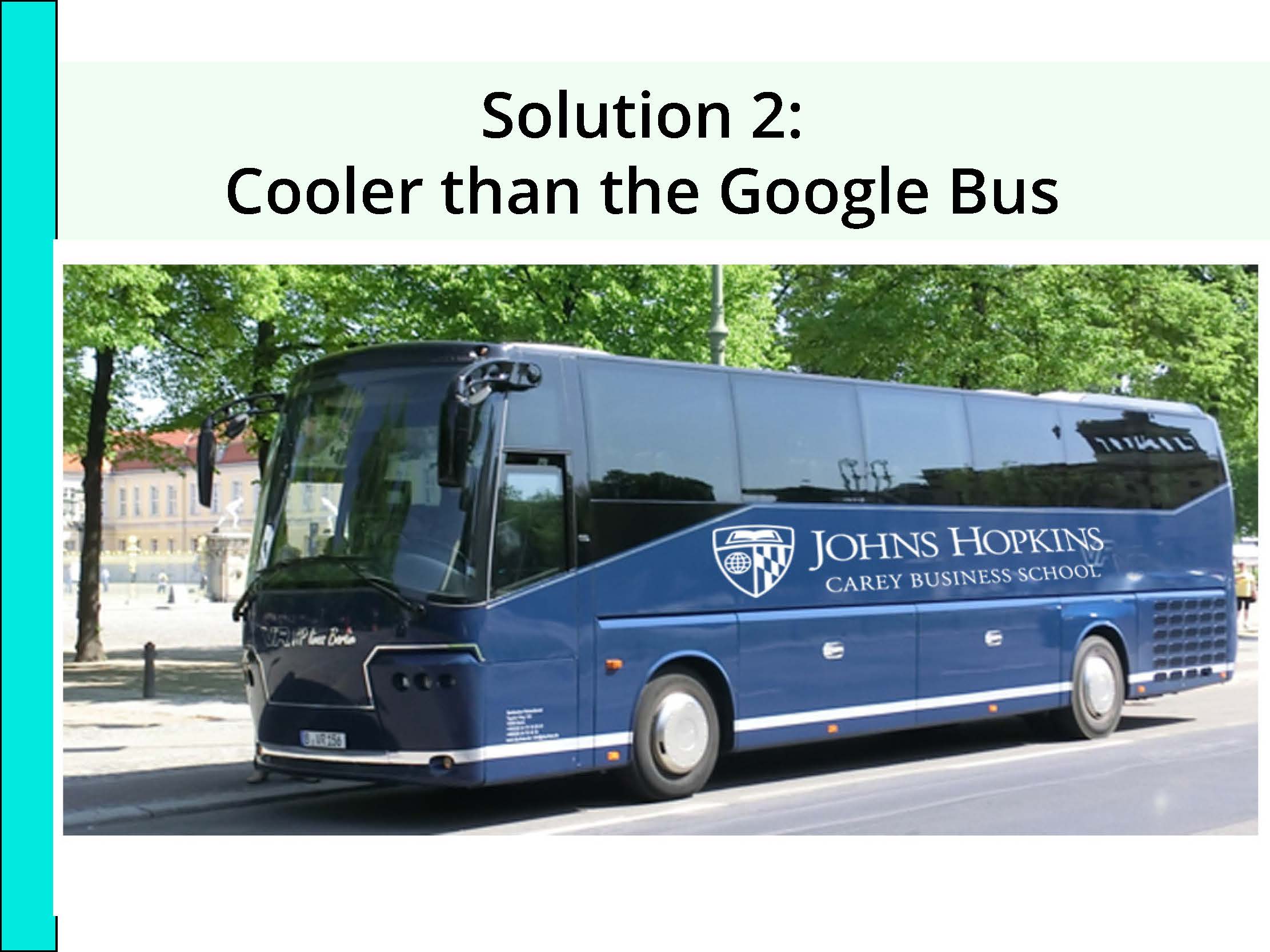
Place: Cultural Awareness, Maryland Institute College of Art, Baltimore, MD
Problem: Organizational Design: How might we close the cultural and physical gaps between the Baltimore and D.C. campuses of the Johns Hopkins Carey Business School.
Project: I worked with three team members to design four solutions that were presented to a panel of experts during at the end of our Cultural Awareness class. The distance between Baltimore and Washington, D.C. makes it difficult to build a cohesive networking community. In four weeks time, we designed solutions that spanned short-term and long-term.
Process: We began by conducting over a dozen interviews with students and faculty form Baltimore and DC campuses with a similar set of questions. From there we shared and pulled out insights into Post-it notes. Many of those insights included pain points, which we grouped together into categories. After including all of our insights, it was clear what students were most focused on by the number of Post-its in each category on the board. We used these categories as fodder for our ideation session, which included both individual and group work. A few ideas rose to the top of the pile and fit naturally with the range of solutions we would typically provide to the client as design thinking advisers. To verify consumer fit, we engaged in a post-analysis focus group.
Product: Our first solution was straightforward; something the Carey Business School would be able to enact tomorrow. The Fun Fund is funding for groups to hold events or activities that involved both campuses. Fun Fund events could include happy hours, ski trips, or something as simple as Carey Business School t-shirts to help build community on both campuses. The next solution could possibly be enacted in the short-term. It is a bus – with features similar to Google’s famous commuter buses – that allows D.C. students to take classes on Baltimore’s campus and vice versa without the pain of traveling. Another solution looked at creating a central community center halfway between the campuses to allow students to live together and connect while attending classes in both cities. The final solution is the longer term planning for a virtual wall on both campuses that patches a live feed of information into the other campus lounge. This wall could be accessed remotely and would be a way to instantly connect with another campus.
Plus: Focus group and interviewing practice





